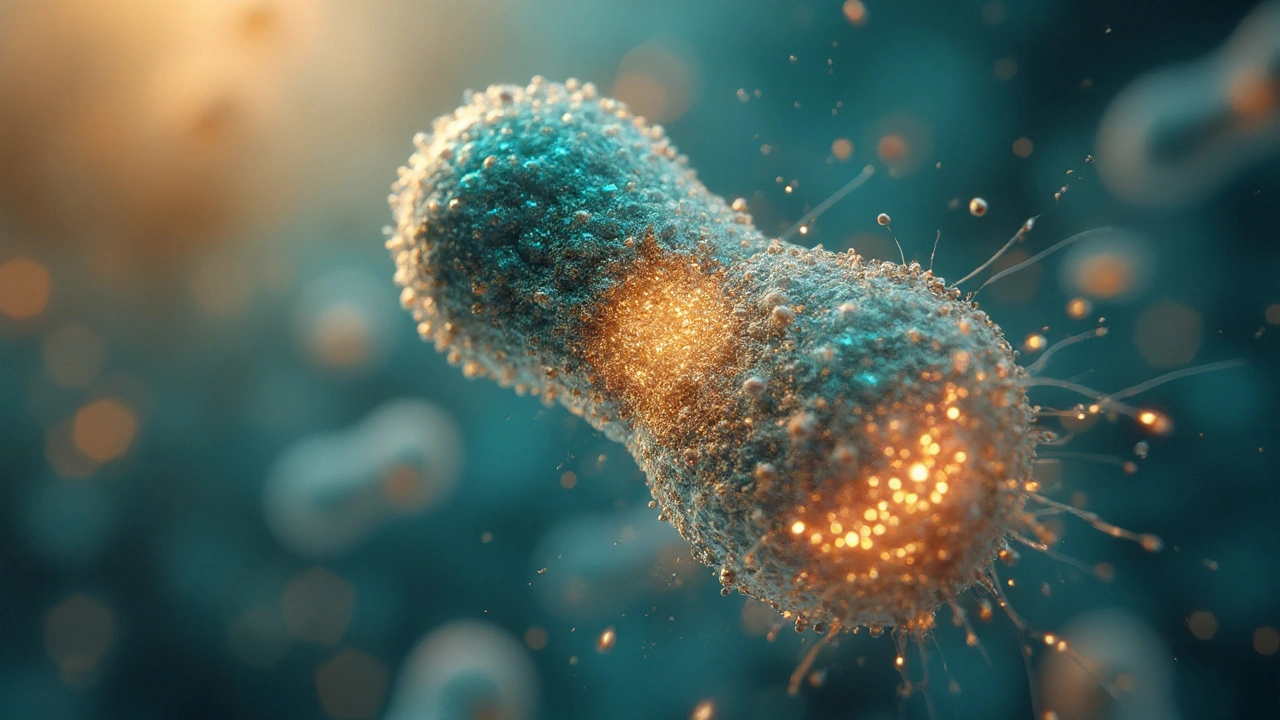
The Science Behind Cefixime: How It Battles Bacterial Infections
Explore how cefixime, a third‑generation oral cephalosporin, stops bacteria by disrupting cell‑wall synthesis, its spectrum, resistance issues and where it fits among antibiotics.
Ever wonder why some antibiotics work like magic on certain infections while others do nothing? The secret often lies in the bacterial cell wall – a tough outer layer that protects the microbe and determines how drugs can get in. Understanding this wall helps you see why doctors choose specific medicines and why resistance pops up.
The core of most bacterial walls is peptidoglycan, a mesh of sugars and amino acids that gives the cell its shape and stops it from bursting. Imagine a brick wall where the bricks are sugars and the mortar is short protein chains – that’s peptidoglycan. In Gram‑positive bacteria, this layer is thick and sits right under the outer membrane, making the wall sturdy and easy for certain antibiotics to attack.
Gram‑negative bugs have a thinner peptidoglycan layer, but they add an extra outer membrane packed with lipopolysaccharides (LPS). This outer shield blocks many drugs and gives the bacteria extra protection. The LPS layer also triggers strong immune responses, which is why infections with Gram‑negative organisms can cause severe inflammation.
Other components like teichoic acids (found only in Gram‑positive walls) and porin proteins (in Gram‑negative outer membranes) play roles in nutrient uptake and drug entry. These smaller pieces can influence how quickly a drug reaches its target or how the immune system spots the invader.
Most classic antibiotics, such as penicillins and cephalosporins, are beta‑lactams that mess with the enzymes building peptidoglycan. When these enzymes (penicillin‑binding proteins) get confused, the wall can’t form properly, and the bacteria burst open. That’s why beta‑lactams work great on Gram‑positive bacteria with thick peptidoglycan.
For Gram‑negative infections, doctors often turn to drugs that can slip through the outer membrane, like carbapenems or aminoglycosides. Some newer agents, like the glycopeptide vancomycin, can’t penetrate the outer layer, so they’re reserved for Gram‑positive cases.
Resistance usually shows up when bacteria change the structure of their peptidoglycan or produce enzymes that break down the antibiotic (like beta‑lactamases). Knowing the wall type helps doctors pick a drug that either avoids these defenses or directly disables them.
Bottom line: when you hear a doctor prescribe a “penicillin‑type” drug, they’re betting on a vulnerable cell wall. If the infection is caused by a Gram‑negative bug, they’ll likely add something that can get past the outer membrane. Understanding this dance can help you ask smarter questions and follow the treatment plan more confidently.
So next time you pick up a prescription, remember the bacterial cell wall isn’t just a random term – it’s the battlefield where your medicine fights the infection. Knowing the basics can make the whole process feel less mysterious and more under your control.

Explore how cefixime, a third‑generation oral cephalosporin, stops bacteria by disrupting cell‑wall synthesis, its spectrum, resistance issues and where it fits among antibiotics.